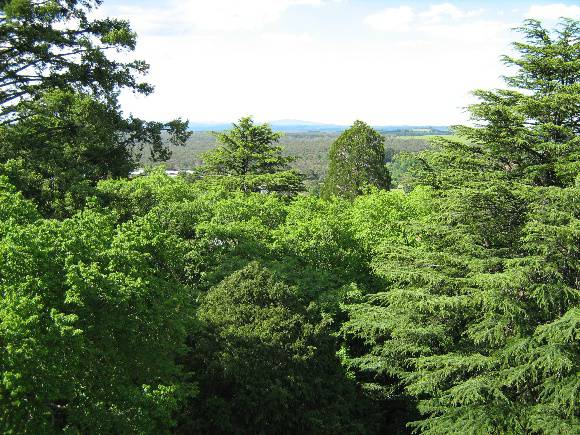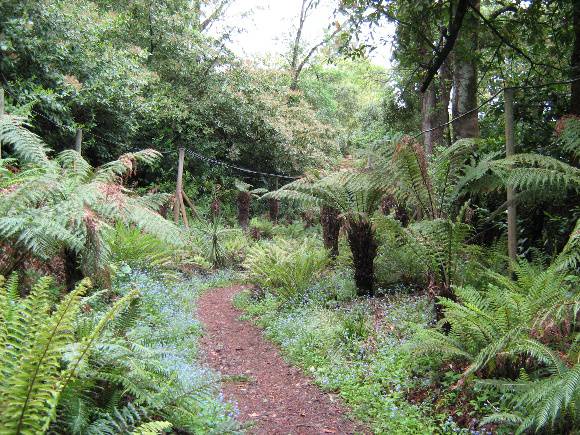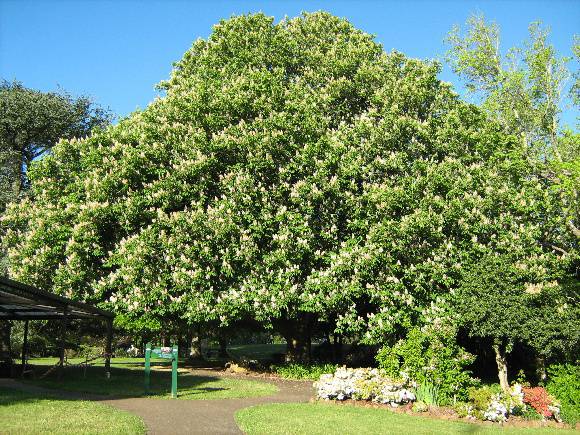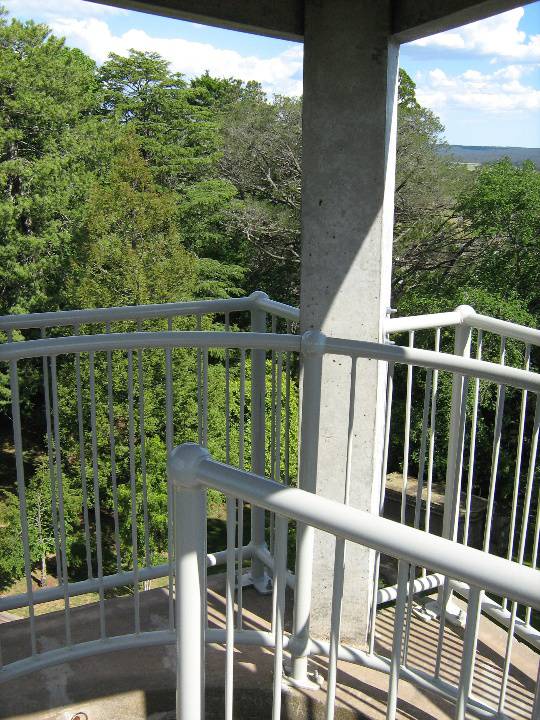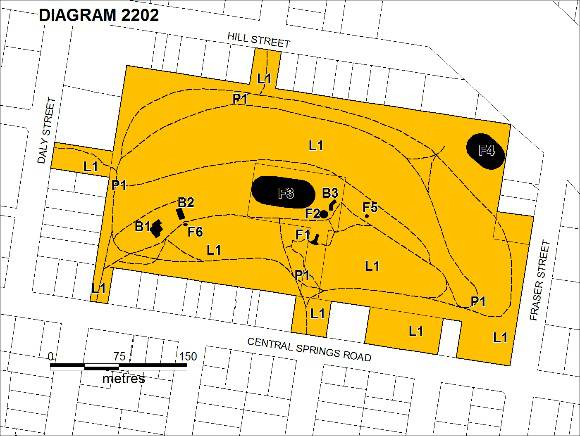| Back to search results » | Back to search page » |
|
DAYLESFORD BOTANIC GARDENS
Other NamesDAYLESFORD BOTANICAL GARDENS , WOMBAT HILL BOTANIC GARDENS LocationCENTRAL SPRINGS ROAD AND FRASER STREET AND HILL STREET AND DALY STREET DAYLESFORD, HEPBURN SHIRE
File NumberHE/03/3065LevelRegistered |
|
Statement of Significance
What is significant?
The Daylesford Botanic Gardens cover an area of 10.4 hectares and are
bounded by Daley Street, Hill Street, Frazer Street and Central
Springs Road. The site on the summit of the extinct volcano of Wombat
Hill at an elevation of 667.8 metres, provides a rich soil, cool
climate growing conditions, a favourable aspect and excellent views to
the surrounding countryside and over the Daylesford township. The land was first set aside in 1854, reserved as public garden in
1862, and developed from c.1865. The Gardens were extended slightly in
1870 and 1883 and developed with input from noted nineteenth century
landscape designer, William Sangster, in 1884-85 whose original plan
survives. Due to the Daylesford Botanic Gardens being sited on top of a hill,
the layout of the Gardens is not immediately apparent but several
distinct areas can be determined. The central lawn area on the south
side has display garden beds, the Alf Headland Conservatory
constructed in 1988 to house the annual display of tuberous begonias,
and a replica rotunda erected in 1993. The works depot area consists
of the curator's residence built in 1948, large sheds, glass houses
and two open nurseries. The Pioneers' Memorial Tower built in 1938
offers the opportunity for views across the Gardens and distant
landscape, and a place to picnic on the north east side. Adjacent is
the Circular Day Basin dating from 1882 which is the earliest known
structure to remain in the gardens, although no longer in use. To the
west is the large Oval Reservoir constructed in 1888-89 which holds
some of Daylesford's water supply with the smaller Lower Service Basin
c.1969 to the north, both of which were roofed in the 1990s. One of
the main features of the gardens is the extant fernery with cascade,
(not operational) designed by Sangster in 1884-85, located on the
southern side of the hill. A circuit path meanders through this area
.
and leads back to the road and into the formal garden area from
the Pioneers' Memorial Tower. Much of the existing path layout,
including the carriage driveway lined with an avenue of Dutch Elms,
have been retained from the nineteenth century, together with the
extensive tree plantingincluding many species of conifers,
other mature trees and cool climate plants.
How is it significant?
The Daylesford Botanic Gardens are of historic, scientific (botanic),
and aesthetic significance to the State of Victoria.
Why is it significant?
The Daylesford Botanic Gardens are historically significant as a fine
example of a regional botanic garden demonstrating the typical
characteristics of a carriage drive, informal park layout, decorative
structures and works such as the memorial tower, conservatory,
rotunda, cascade and fernery, which contrasts with the open lawns
planted with specimen trees, areas of intensive horticultural interest
and close proximity to a township developed during the mid to late
nineteenth century. The Daylesford Botanic Gardens are historically significant for the
design input by noted landscape designer William Sangster, and for the
survival of his 1884 plan, which is a rare example of a plan from this
prolific garden designer. The Daylesford Botanic Gardens are of scientific (botanic)
significance for the extensive conifer collection and cool climate
plants. The Gardens contain an outstanding collection of conifers and
other mature trees, many of which were donated by renowned botanist
Ferdinand von Mueller. Significant trees include Pinus
ponderosa (Western Yellow Pine), Pinus coulteri (Big Cone
Pine), two Abies nordmanniana (Caucasian Fir), Abies
pinsapo, (Spanish Fir) and a Cedrus atlantica f. glauca
(Blue Atlas Cedar), Pinus wallichiana (Bhutan Pine), Pinus
pinaster (Maritime Pine), Sequoiadendron giganteum (Giant
Redwood), (Monkey Puzzle) and Aesculus hippocastanum (Horse
Chestnut), many the largest or finest examples in Victoria. Other
outstanding trees include a Tilia cordata (Small-leaved
European Linden), a row of Cupressus lusitanica (Mexican
cypress), a Quercus robur (English Oak) planted in 1863,
avenues of Dutch Elms and a rare Quercus leucotrichophora
(Himalayan Oak). The Daylesford Botanic Gardens are of aesthetic significance as a
rare example of a botanic garden spectacularly sited on an extinct
volcanic cone which allows a panoramic view, aided by the 1938
Pioneers' Memorial Tower, as well as vistas within and out of the
gardens and from the township to the gardens. As the most prominent
local landmark, the Garden's vertical dominance in the landscape
provides a dark contrast to the elms avenues, oaks and other deciduous
species.
Group
Parks, Gardens and Trees
Category
Garden Botanic


